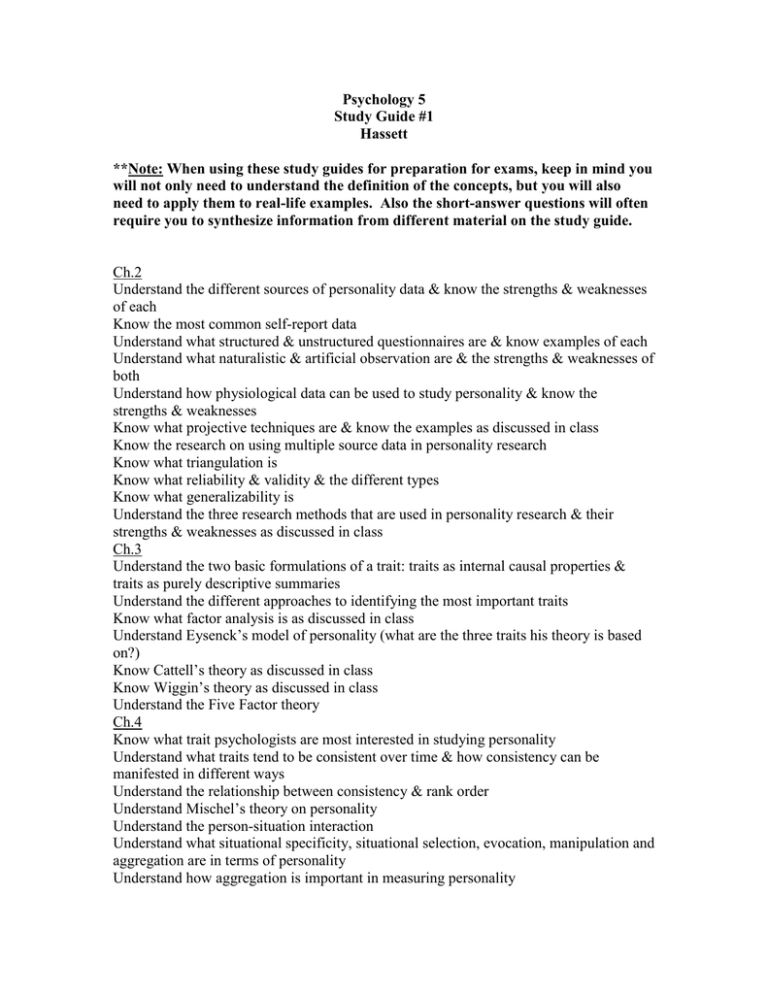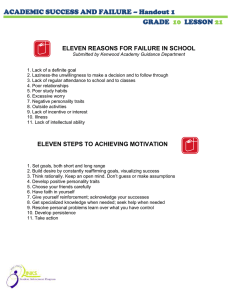Exam 1 Study Guide
advertisement

Psychology 5 Study Guide #1 Hassett **Note: When using these study guides for preparation for exams, keep in mind you will not only need to understand the definition of the concepts, but you will also need to apply them to real-life examples. Also the short-answer questions will often require you to synthesize information from different material on the study guide. Ch.2 Understand the different sources of personality data & know the strengths & weaknesses of each Know the most common self-report data Understand what structured & unstructured questionnaires are & know examples of each Understand what naturalistic & artificial observation are & the strengths & weaknesses of both Understand how physiological data can be used to study personality & know the strengths & weaknesses Know what projective techniques are & know the examples as discussed in class Know the research on using multiple source data in personality research Know what triangulation is Know what reliability & validity & the different types Know what generalizability is Understand the three research methods that are used in personality research & their strengths & weaknesses as discussed in class Ch.3 Understand the two basic formulations of a trait: traits as internal causal properties & traits as purely descriptive summaries Understand the different approaches to identifying the most important traits Know what factor analysis is as discussed in class Understand Eysenck’s model of personality (what are the three traits his theory is based on?) Know Cattell’s theory as discussed in class Know Wiggin’s theory as discussed in class Understand the Five Factor theory Ch.4 Know what trait psychologists are most interested in studying personality Understand what traits tend to be consistent over time & how consistency can be manifested in different ways Understand the relationship between consistency & rank order Understand Mischel’s theory on personality Understand the person-situation interaction Understand what situational specificity, situational selection, evocation, manipulation and aggregation are in terms of personality Understand how aggregation is important in measuring personality Understand the key issues in measuring traits & how they are dealt with (i.e., detection) Know the three main reasons employers use personality tests on potential employees Know the two concerns employers must satisfy to use personality tests for employee selection Ch.5 Understand the three key forms of stability Understand the two defining features of personality change Understand the three levels of analysis Know the stability of personality throughout life Know what aspects of temperament are most stable Know which traits to increase & decrease with age Understand what self-esteem variability is Know what self-esteem is related to Know what sensation seeking is, what is composed of & its development (i.e., when it peaks) Know the research on personality traits & women as it relates to aging Know which traits are associated with marital satisfaction Know the research on men’s trait of impulsivity


